Omega’s Gold Medal Olympic Timekeeping Equipment
A retrospective of Omega’s breakthrough timekeeping equipment since 1932.
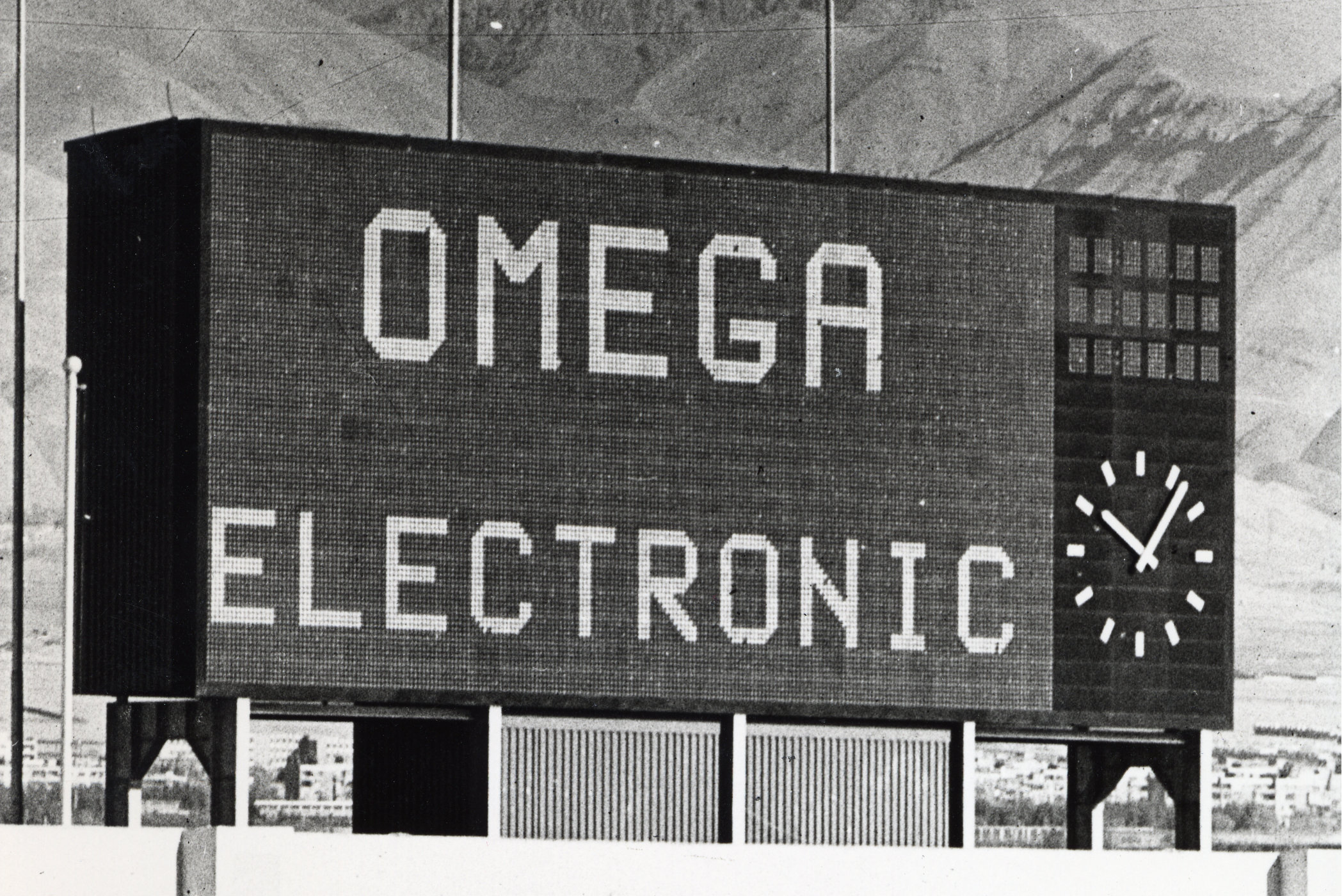
It’s been touch and go since the outset of the pandemic, but the Tokyo 2020 Olympics finally reached the starting line on 23 July 2021, albeit a year late. Marking Omega’s 29th time as Official Timekeeper of the Olympic Games, 400 tonnes of state-of-the-art equipment, 200km of cables and optical wire, 530 timekeepers and on-site professionals have been dispatched to Tokyo. The mission is to ensure that all 11,091 athletes taking part in the 339 events in 33 sports will benefit from precision timekeeping in events that are often secured by milliseconds that the human eye cannot detect. Timing has come a long way since Omega made its first official appearance in 1932 at the Los Angeles Olympics. Capitalising on the world’s attention on the Tokyo Olympics, it’s a good moment to review Omega’s impressive contributions to the world of timekeeping, and in the same breath, acknowledge my indebtedness to Omega’s comprehensive volume dedicated to its timekeeping breakthroughs in “Great Olympic Moments in Time”. Given the amount of training and sacrifice invested by athletes, it is reassuring to know that despite all the variables out there, one thing won’t fail for them at the Olympics: fair timing.
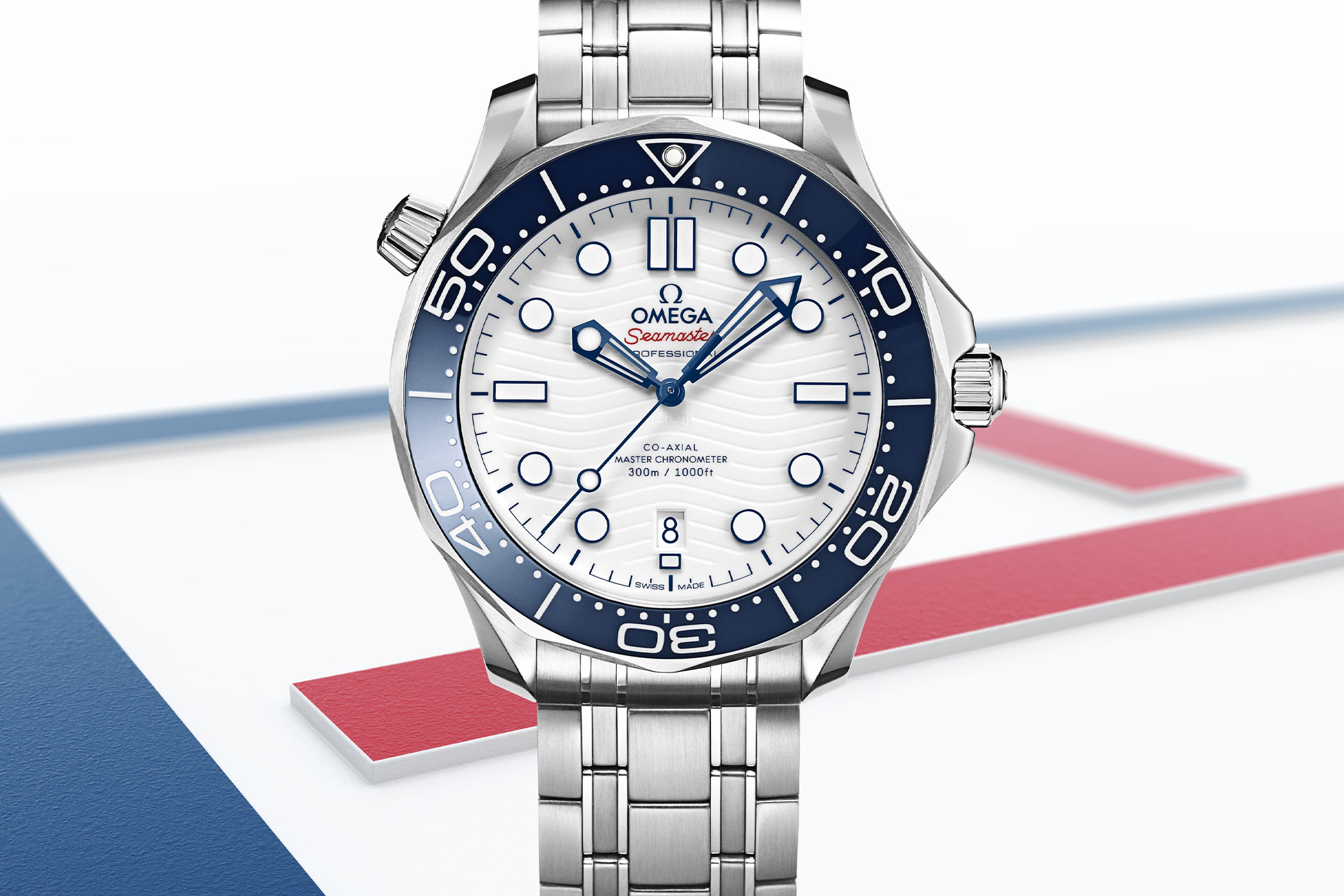
Citius, Altius Fortius – Swifter, Higher, Stronger
The first Olympic Games were a series of athletic competitions between city-states held in Olympia in honour of Zeus. Attracting male athletes from every corner of the Greek world, the Olympics took place in 776 BC and continued every four years until 393 AD. After a hiatus of over 1,500 years – and thanks to the relentless enthusiasm of Baron Pierre de Coubertin – the first modern Olympiads were held in Greece in 1896 with athletes from 14 nations. Staged at four-year intervals, there have been some hiccoughs along the way: the 1916 Berlin Olympics and the 1940 Tokyo and 1944 London Olympics were cancelled due to the two World Wars, and the 2020 Tokyo games were postponed just two weeks before they were scheduled to start due to the coronavirus pandemic. Thankfully, the 2020 Olympics (23 July – 8 August) were rescheduled in 2021, and despite the empty stadiums, the Olympic spirit is alive and well.
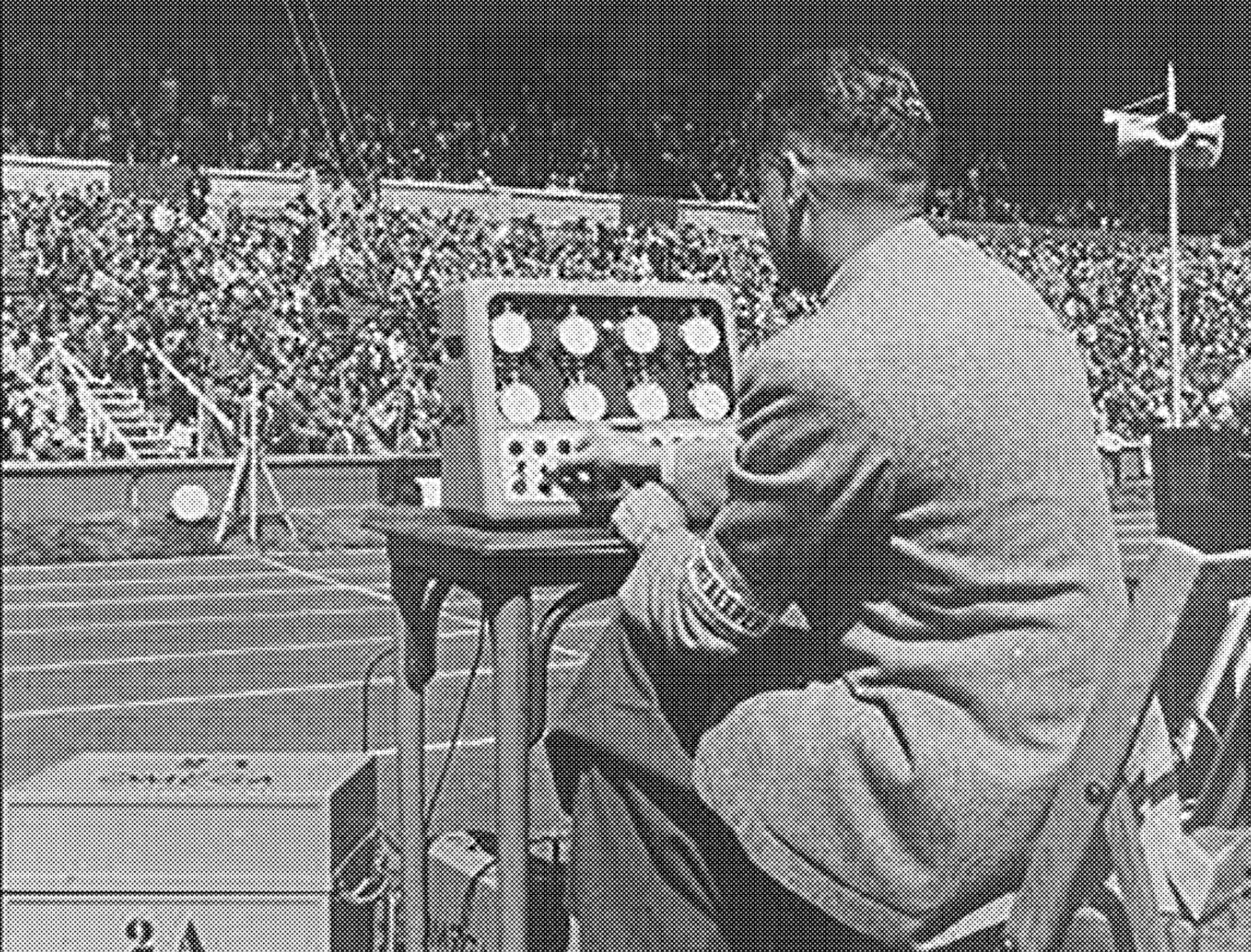
Los Angeles 1932
In many ways, the Los Angeles Olympics marked a new era in the games with the introduction of the three-level winner’s podium and the assignment of one company to time the events. With its solid reputation for precision, Omega secured the contract and dispatched one watchmaker and a suitcase with 30 high-precision stopwatches from Bienne to Los Angeles. With teams from 37 nations and 1,334 athletes competing in 117 events over 16 days, the innovative technology provided by Omega meant that athletes could be timed to the nearest 1/10th of a second, a huge step forward from the 1/5th of a second timings that were recorded at the 1928 Olympic Games in Amsterdam. Equipped with thirty (calibre 1130) flyback stopwatches and an official timekeeper, this was Omega’s first time at the rodeo, an event it has repeated 29 times.
For the 1936 Berlin games, 185 chronographs were shipped from Bienne to the German capital, once again supervised by a single watchmaker (Paul-Lois Guignard). Jesse Owens, the legendary black American athlete who took home four gold medals – much to Hitler’s chagrin – had to dig his own starting holes with a small shovel.
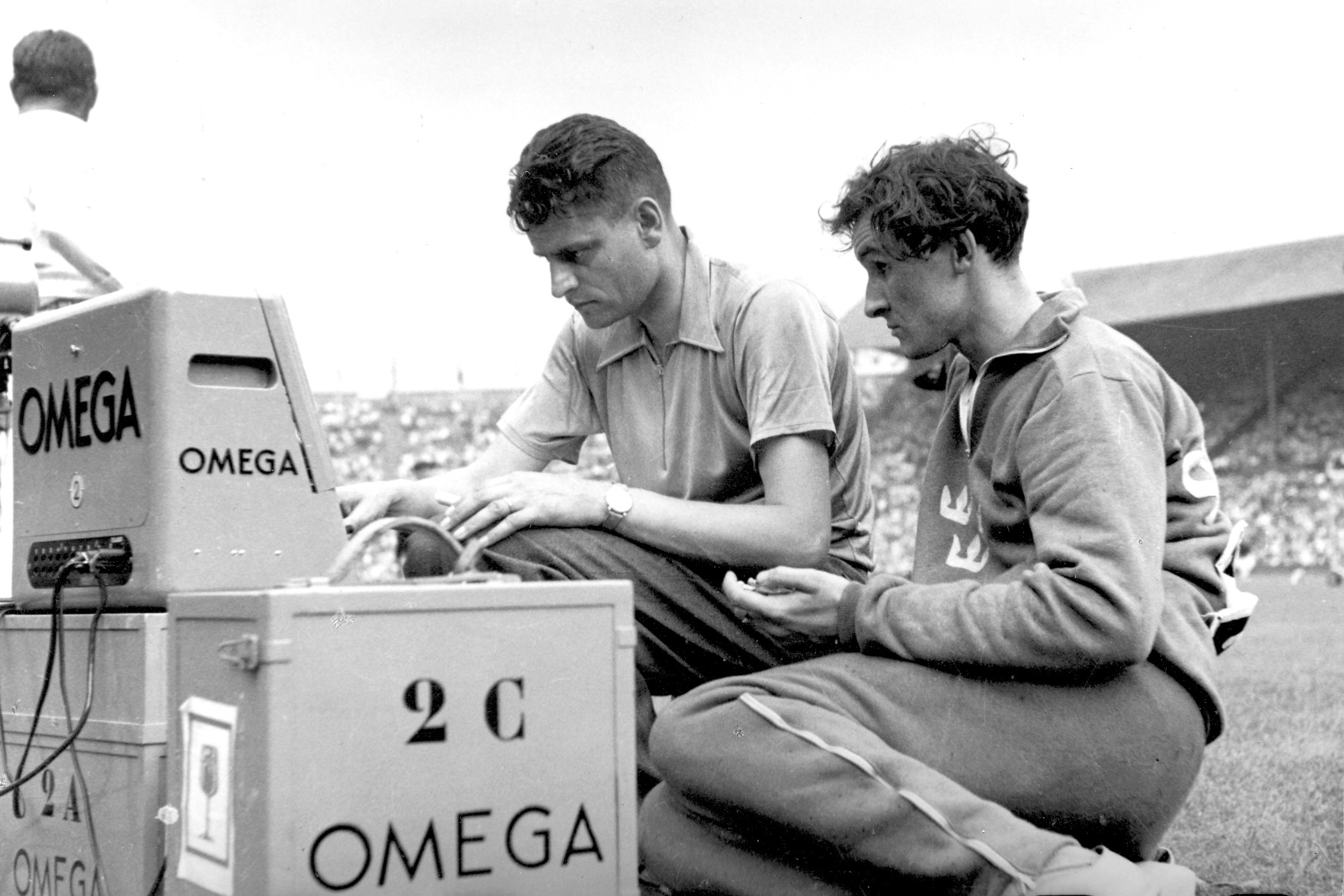
London 1948
At both the St. Moritz Winter Olympics and the London Olympics (known as “the austerity games”), Omega introduced a photoelectric timing system that outperformed the capabilities of the human eye. The British Race Finish Recording Company Ltd. also developed its first slit photo-finish camera, with a continuous image and time recording designed to work in tandem with Omega’s equipment. Both devices marked the advent of electronic sports timekeeping and addressed the problem of elastic finishing line tapes that made it hard to determine who had crossed the line first. With the photo-finish camera, judges could clearly distinguish the winner. Equipped with a sensitive photoelectric cell, the ‘Photosprint’ relied on a beam of light projected along the finishing line.
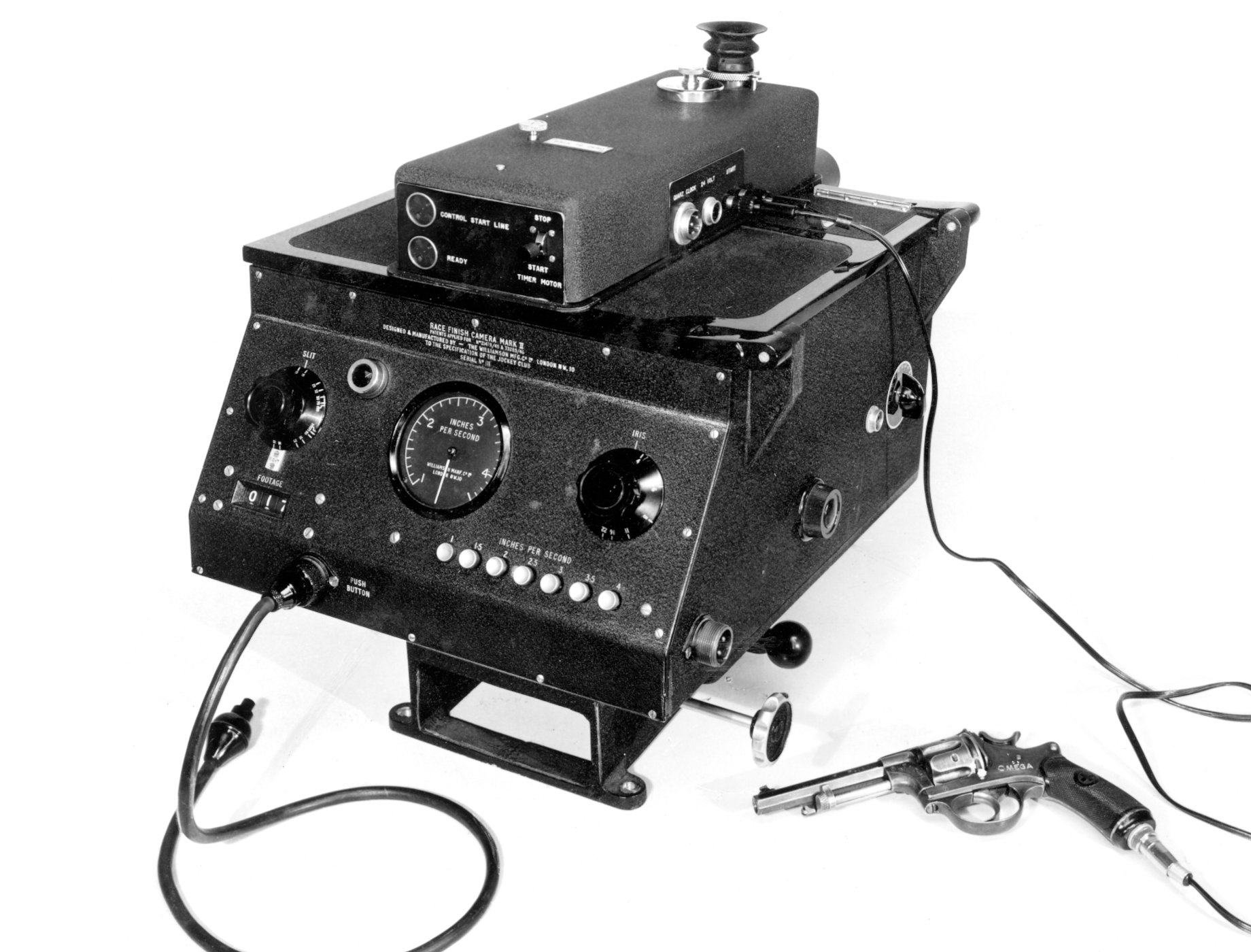
As explained in “Great Olympic Moments in Time”: “This new device replaces the limited sight capabilities of the naked eye with a highly sensitive photocell…The principle is based on the use of a beam of light which is projected along the finishing line and back again. As soon as a runner interrupts the beam by crossing it, the stopwatches are triggered. Since all the functions are electronic, the level of accuracy is such that times could be given to the nearest 1/1000th of a second.” The “Magic Eye”, or photo-finish camera, was capable of pinpointing the exact position of athletes on the finish line and resolved disputes such as the historic 100-meter dash in which two American runners, Harrison Dillard and Barney Ewell, clocked the same time of 10.3 seconds. After consulting the photo-finish images, the judges appointed Dillard as the gold medallist winner.
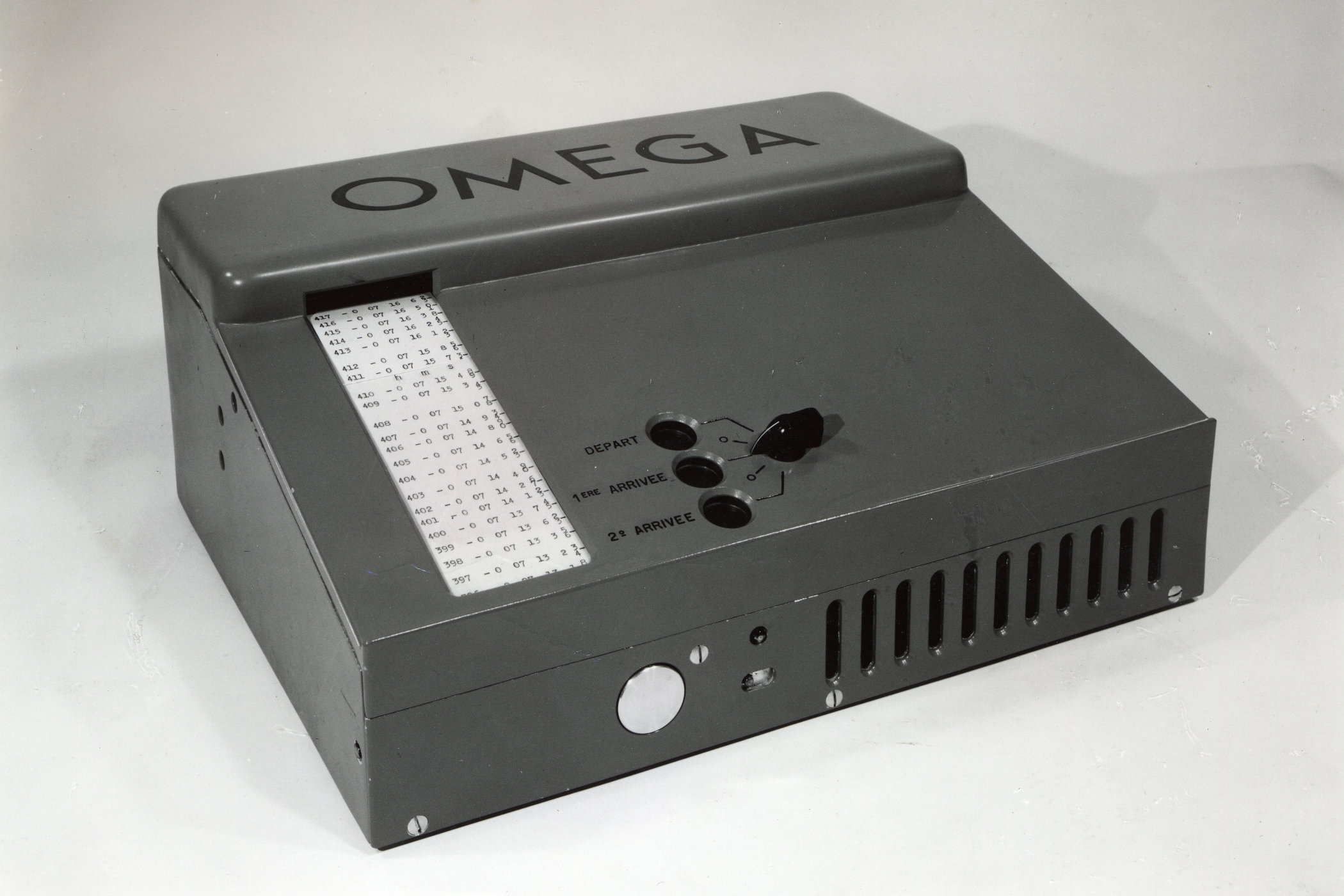
Helsinki 1952
Just ahead of the Helsinki games, Omega developed a lighter, quartz-operated Time Recorder, an electronic chronograph that was accurate to the nearest 1/100th of a second. For the first time, fractions of a second at the bottom of the athletes’ images at the finish line could be displayed. It was the beginning of the era of quartz and electronics. The transportable Omega Time Recorder could print the results on a roll of paper, which earned Omega the Olympic Cross of Merit in 1952 for its “exceptional services to the world of sport”.
Melbourne 1956
Among the 2,475 kg of equipment shipped to Australia for the Olympic Games was Omega’s innovative Swim Eight-O-Matic Timer, a semi-automatic swimming timer with eight electromechanical counters for each lane with a digital display. Although the starting time was triggered automatically by the pistol, the finishing times were still measured by hand-held electric stopwatches by 24 timekeepers (3 per lane!).
Innsbruck 1964
Innsbruck 1964 marked the first televised games allowing viewers around the world to watch ‘real time’ sports action from the slopes. The quartz-driven Omegascope developed in Bienne superimposed the live times of the athletes on the bottom of the screen with a running clock transporting the thrill of the race into people’s living rooms.
Mexico City 1968
The groundbreaking technology developed by Omega for swimming competitions was touchpads. Inserted on the wall with two-thirds of their surface immersed in the water, the bright yellow touchpads (90cm high x 240cm wide) were extremely sensitive to pressure allowing a swimmer to touch and effectively stop the clock with their own hands. The touchpads responded to pressure from the swimmer’s body but not from the water. Before the advent of touchpads, judges had to time the moment the swimmer touched the wall. With up to three judges per lane (see Melbourne 1956), timings often differed, and the advent of touchpads solved the problem once and for all. Thanks to touchpads, swimmers were the only athletes who could stop their own running time – until Tokyo 2020, where climbers participating in the new discipline of Sport Climbing can hit the touchpad when they reach the summit.
The Mexico City Olympics were the first fully electronically timed games. The Omega Photosprint (developed in 1963) was used in athletic events filming runners as they crossed the finish line. With a time strip running along the bottom of the image, the Photosprint could literally spit out photographs in just 30 seconds.
Montreal 1976
Omega unveiled its new Video Matrix Board to show times, points and scores along with black and white video recordings of certain events.
Los Angeles 1984
If you watched the Tokyo 2020 men’s final 100m race, you will have seen how British sprinter Zharnel Hughes was disqualified from the final after a false start. Once again, Omega was behind the first false start detection system first implemented in Los Angeles, 1984. Used in athletics and swimming events, the false start detectors were combined with loudspeakers placed behind each starting block. Omega’s big contribution to the 1984 Olympics was the introduction of its false start detection device that measures the pressure each runner exerts against the starting block. Athletic starting blocks have built-in sensors that measure an athlete’s force against the footrest 4,000 times per second, as well as integrated speakers to hear the starting signal. The rules set the minimum reaction time at 100 milliseconds; any reaction below this limit is premature and produces a false start.
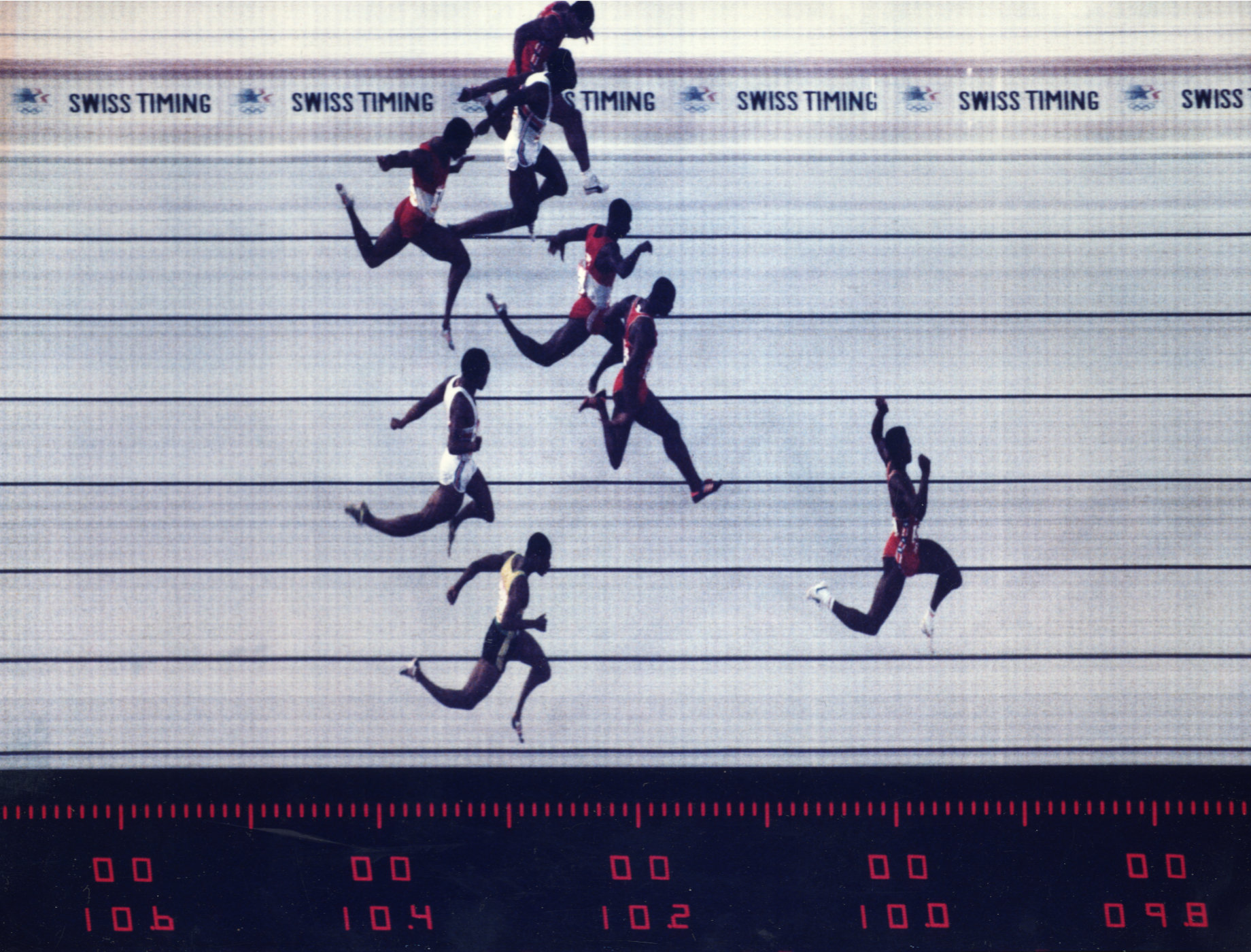
Seoul 1988
Calgary and Seoul were the first computerized Olympic Games, and Omega displayed real-time scores and images on a colour video matrix board (14 x 9m).
Albertville 1992
At the 1992 Winter Games in Albertville, the times of speed skaters were measured digitally by Omega’s Scan-O-Vision to the nearest 1/1000th of a second as the skaters whizzed past the finish line.
Atlanta 1996
Swatch brought another innovation to the 1996 Atalanta games in the form of a Global Positioning System (GPS) used in the sailing regattas to plot the boats’ position.
Torino 2006
For the first time at the Olympic Games, speed skaters were equipped with special transponders on their ankles, sending and receiving radio signals to let Omega capture specific time measurements throughout the race.
Beijing 2008
Another record was achieved in 2008 in sheer tonnage as Omega delivered a record 420 tons of timekeeping equipment for the Beijing Olympics narking its 23rd time as Official Timekeeper of the games.
Vancouver 2010
The classic starting pistol bid farewell in 2010 and was replaced with the electronic starting pistol. The reason was simple: sound travels slower than light. The streamlined futuristic red flash gun is connected to speakers positioned behind each racer; once the trigger is pressed, a sound, a light flash and a start pulse are emitted, giving every athlete an equal start.
London 2012
Besides London mayor Boris Johnson parachuting and getting stuck on a zip wire to celebrate the London Olympics, the 2012 Olympics signalled the advent of Omega’s new Quantum Timer accurate to 1/1,000,000th of a second.
Rio 2016
The Scan ‘O’ Vision MYRIA is Omega’s most advanced photo-finish camera and the ultimate arbiter in every track race, capable of recording 10,000 digital images per second. Placed on the finish lines of sprints, hurdles, and other races, Omega’s Scan ‘O’ Vision MYRIA can record up to 10,000 digital images per second to produce a composite photo enabling judges to determine official rankings and times of each event.
Pyeongchang 2018
New motion sensors and positioning systems were introduced during this episode of the winter Olympics, providing in-depth information on every athlete’s performance from start to finish.
Tokyo 2020
It might be 2021, but to respect the four-year interval and all the investment poured into merchandising, the latest Olympic Games are officially known as Tokyo 2020. Former technological innovations developed by Omega will be on show again at Tokyo 2020, including hi-resolution scoreboards, electronic starting pistols, starting blocks with sensors, the Scan ‘O’ Vision Myria photo-finish camera, photocell technology, swimming touchpads, a quantum timer with a resolution of one-millionth of a second, and even a swimming Light Show placed on the starting blocks with dots that light up to indicate who came in first, second and third position. New sports joining the Olympics this year include karate, sport climbing, surfing, baseball and skateboarding.
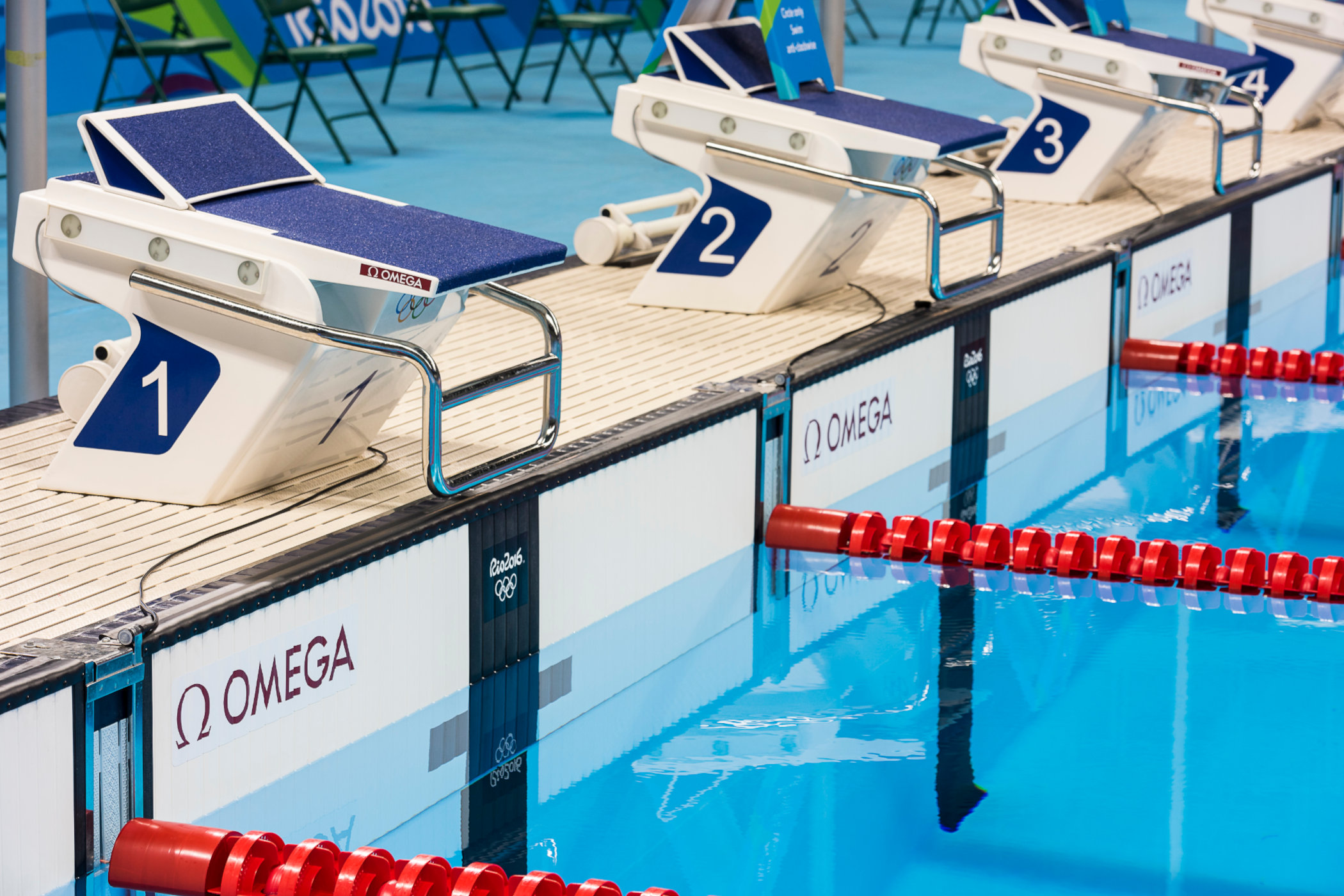
Real-Time Tracking System
As you can imagine, Omega is deploying its latest arsenal of Olympic goodies, including motion sensing and positioning systems to give spectators and athletes/coaches real-time data. The novelties this year are designed to show every single stage of an athlete’s performance. Not only beneficial for viewers, but this new vision of storytelling is also a huge aid for athletes and coaches to gauge performance.
To benefit from this vital information, track athletes are fitted with motion sensor tags on their start numbers that transmit crucial information to Omega, such as live positions, live speed, acceleration, deceleration and distance. This means that when you watch the 400m, you can see exactly where the runners are positioned on the turn. If it’s the 100m, you can see who accelerated for the best start and when the winner reached top speed; if it’s the 10,000m, you can see the distance between runners and who’s picking up or losing speed.
Swimmers will also benefit from image-tracking cameras that will allow Omega to show live positions, live speed, acceleration, deceleration, distance between swimmers and number of strokes. There is also a nifty little lap counter placed underwater in case the swimmer loses count. Another sport that will benefit from image-tracking cameras is beach volleyball, with information offered on the distance each player covers, the speed of the players and the ball, the number of jumps and height, and the type of shots.
Gymnasts will be covered with a new technology known as Pose Detection, which registers the complete movements of each athlete and is used as an adjudication tool for judges. Equestrian events will also benefit from image-tracking technology with laser detection to pinpoint the horse’s movement. At the same time, cyclists will have motion sensor tags on their bikes, and open water swimmers and triathletes will wear tags to pinpoint their positions. Even new events at the Olympic Games like Sport Climbing will have touchpads at the top (like swimmers) to mark their arrival!
Whichever way you look, Omega’s big eye is watching!

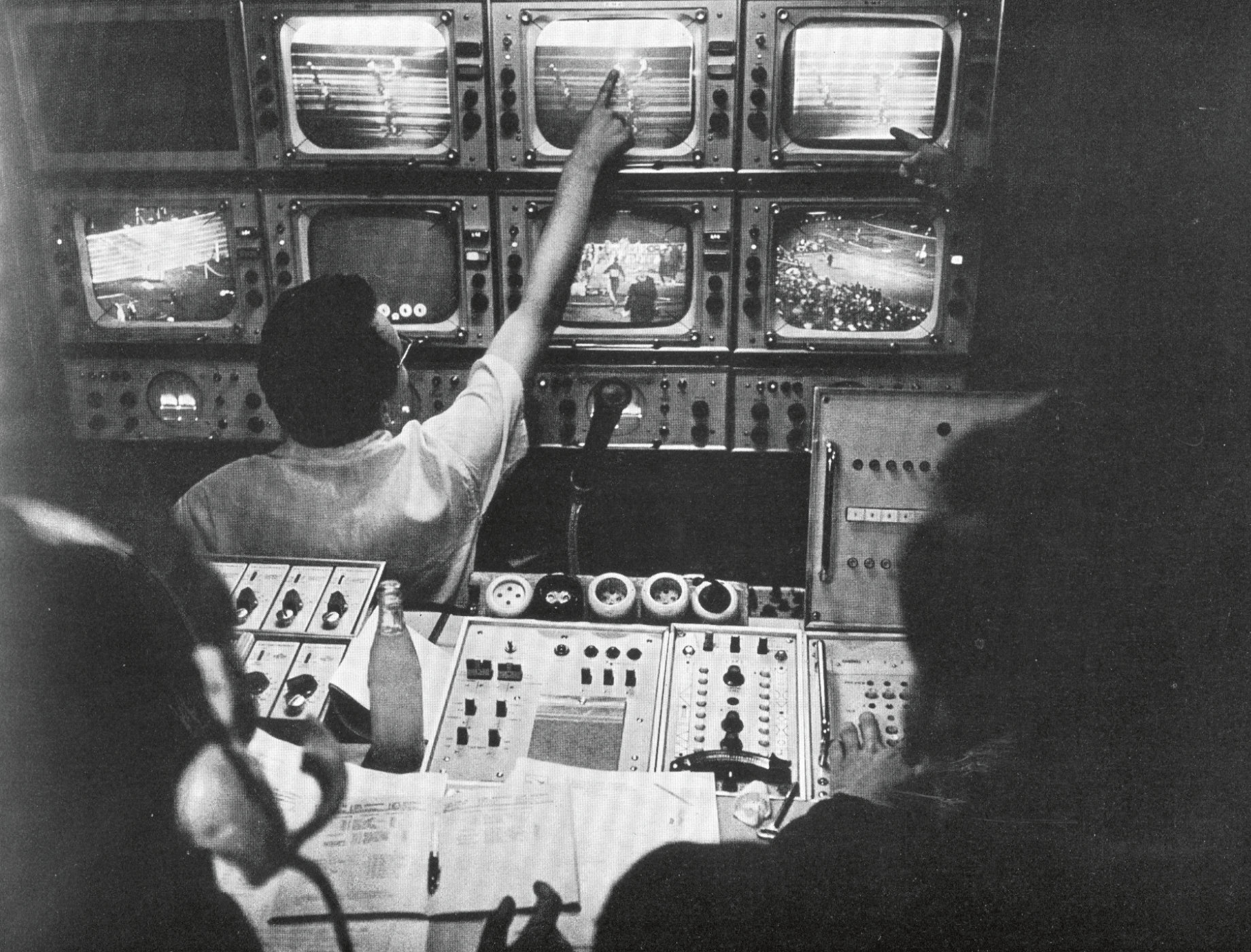
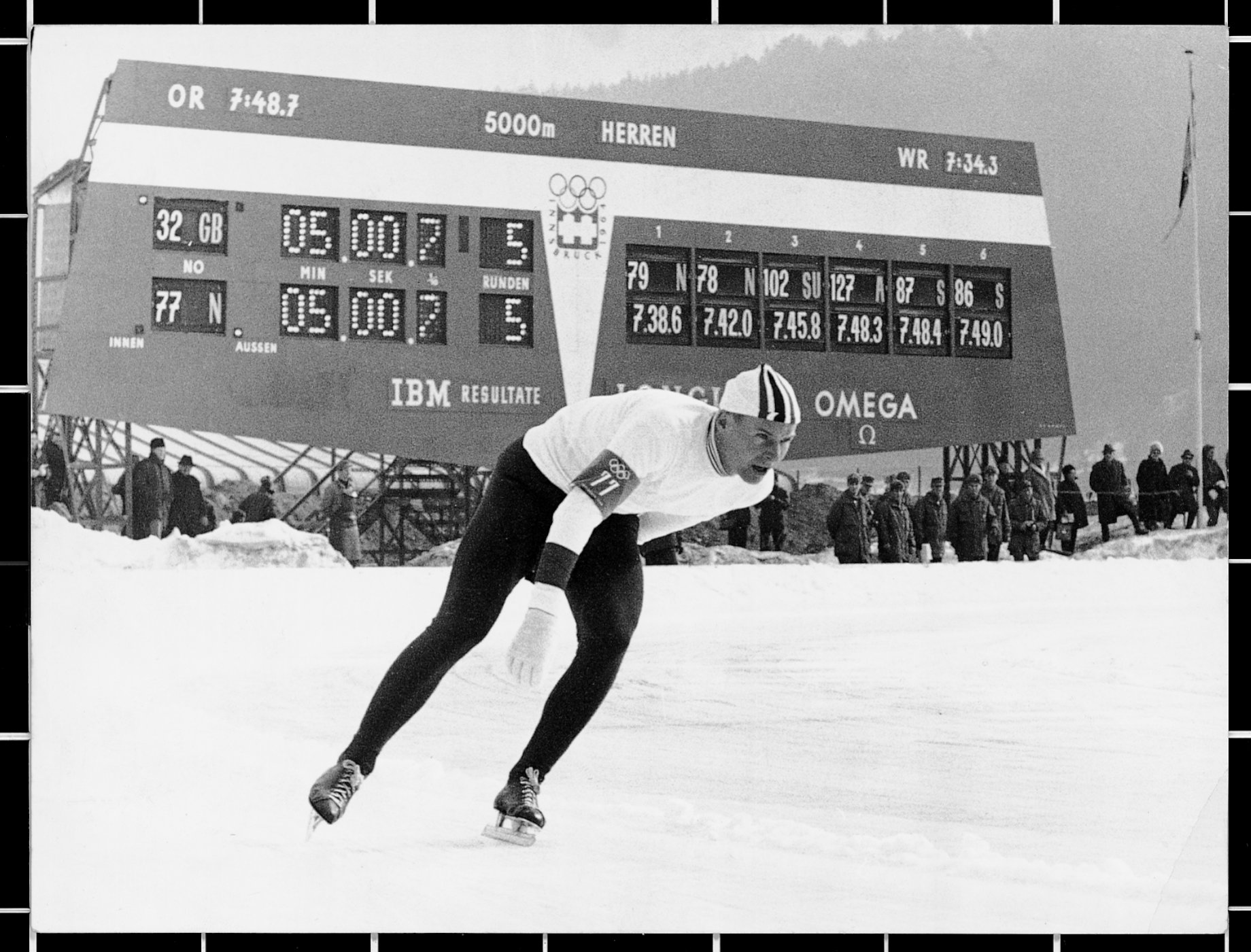

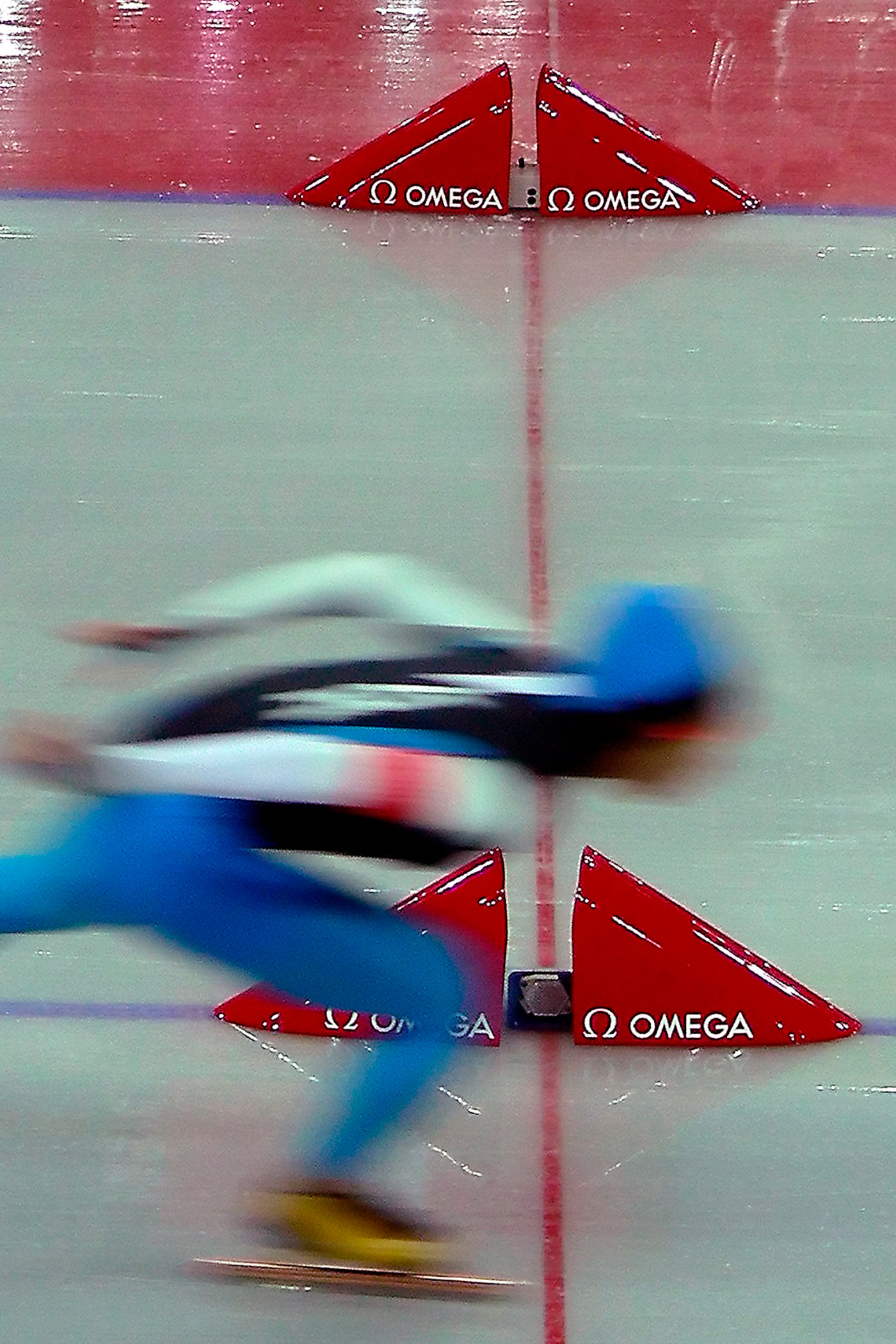

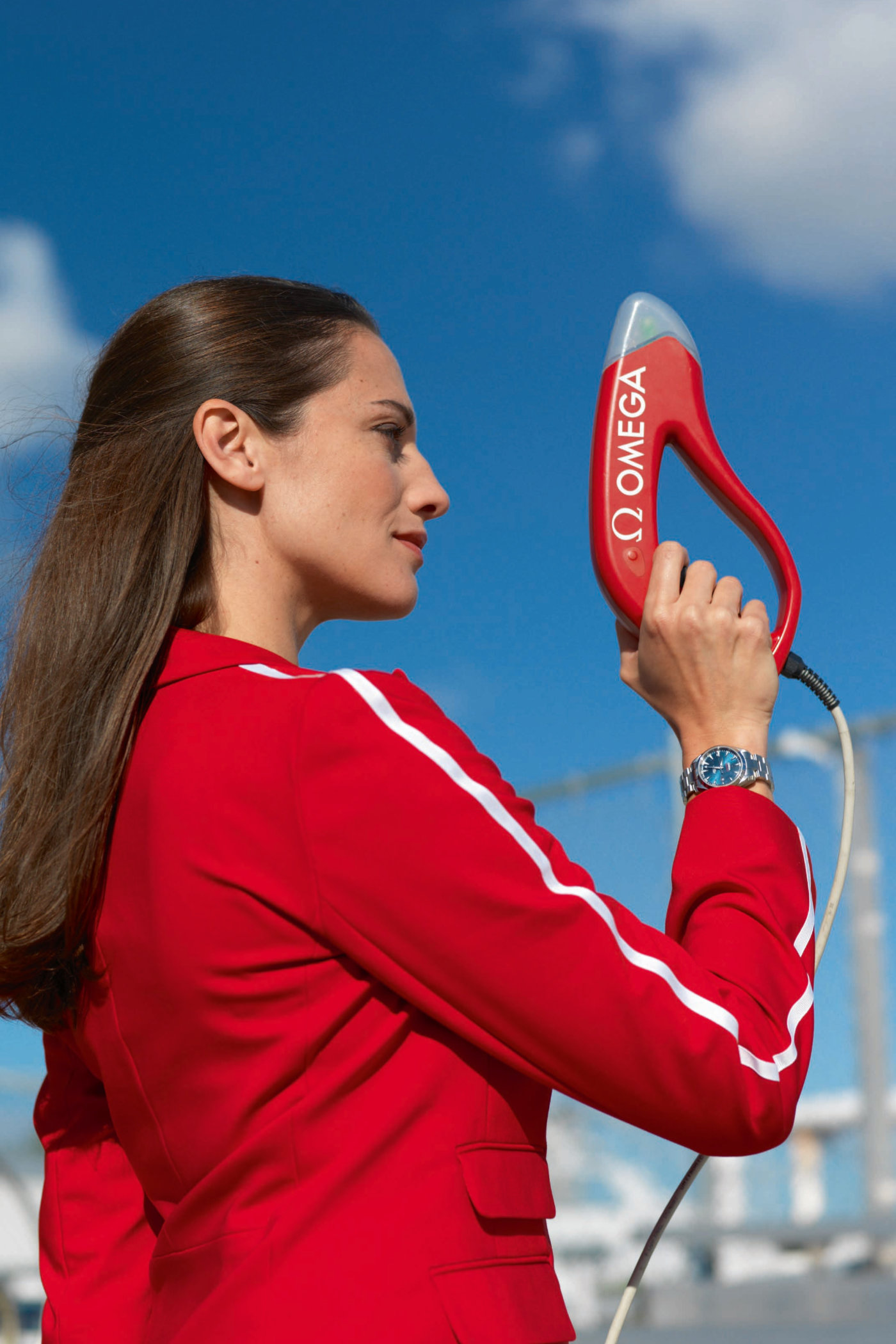
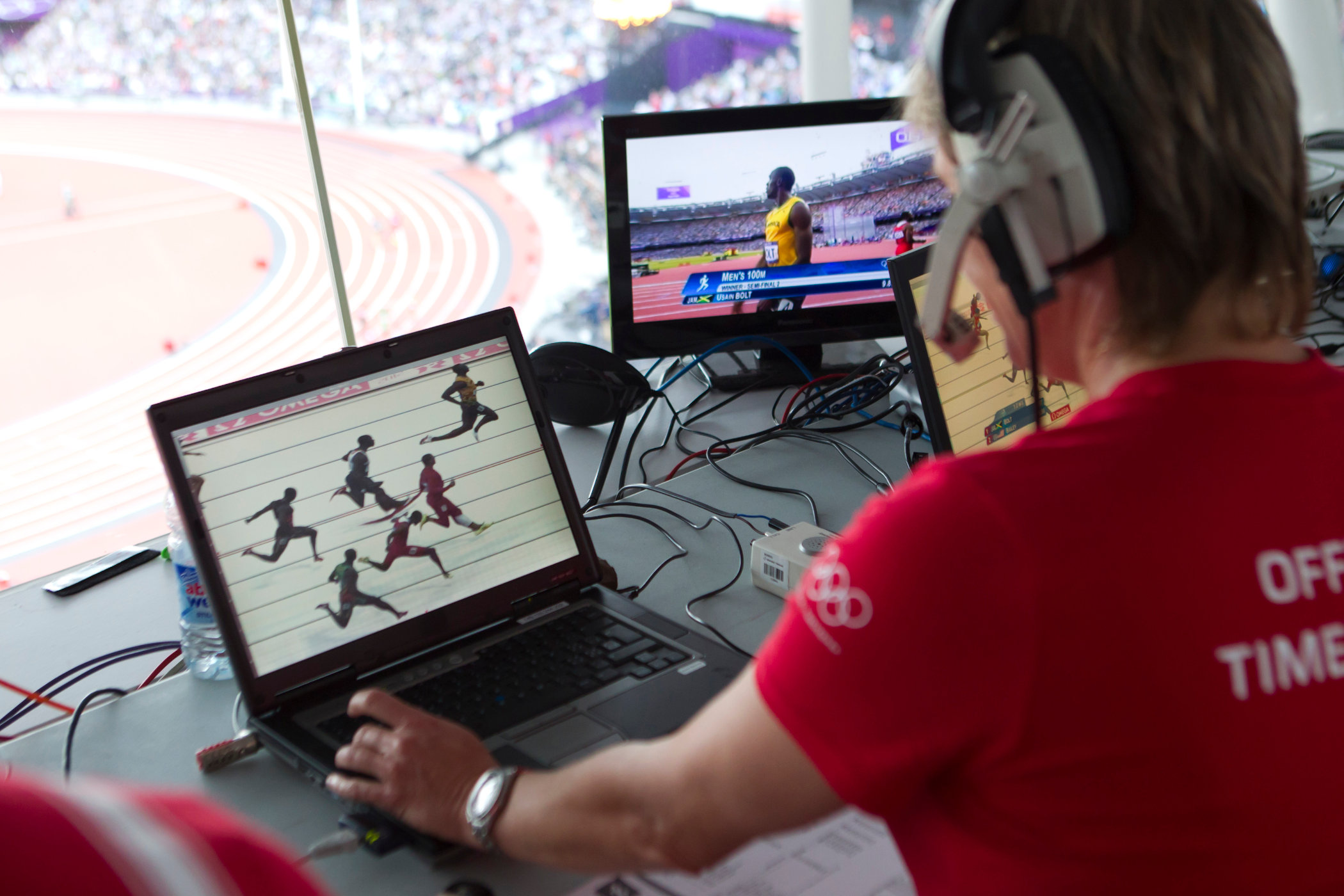
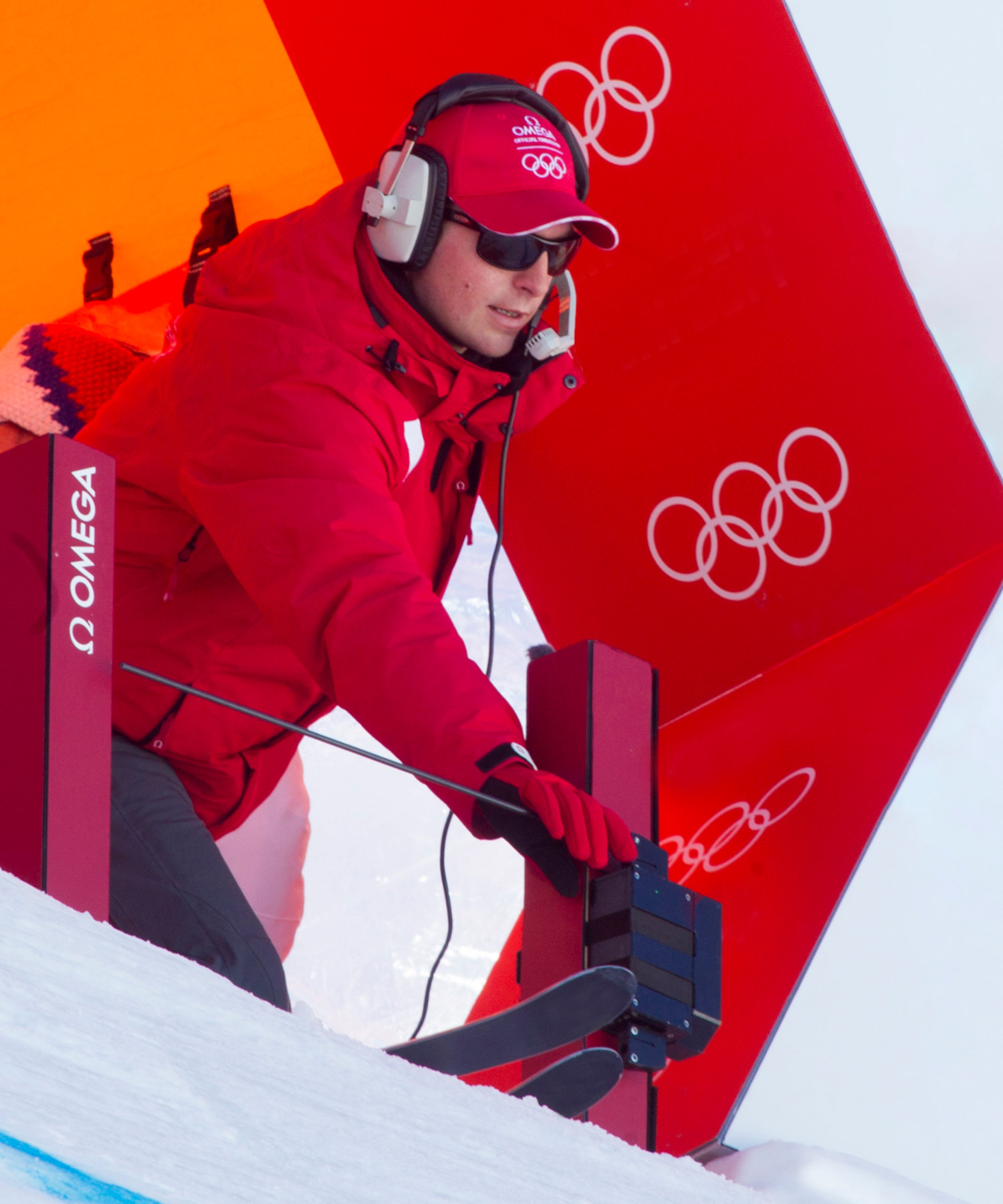
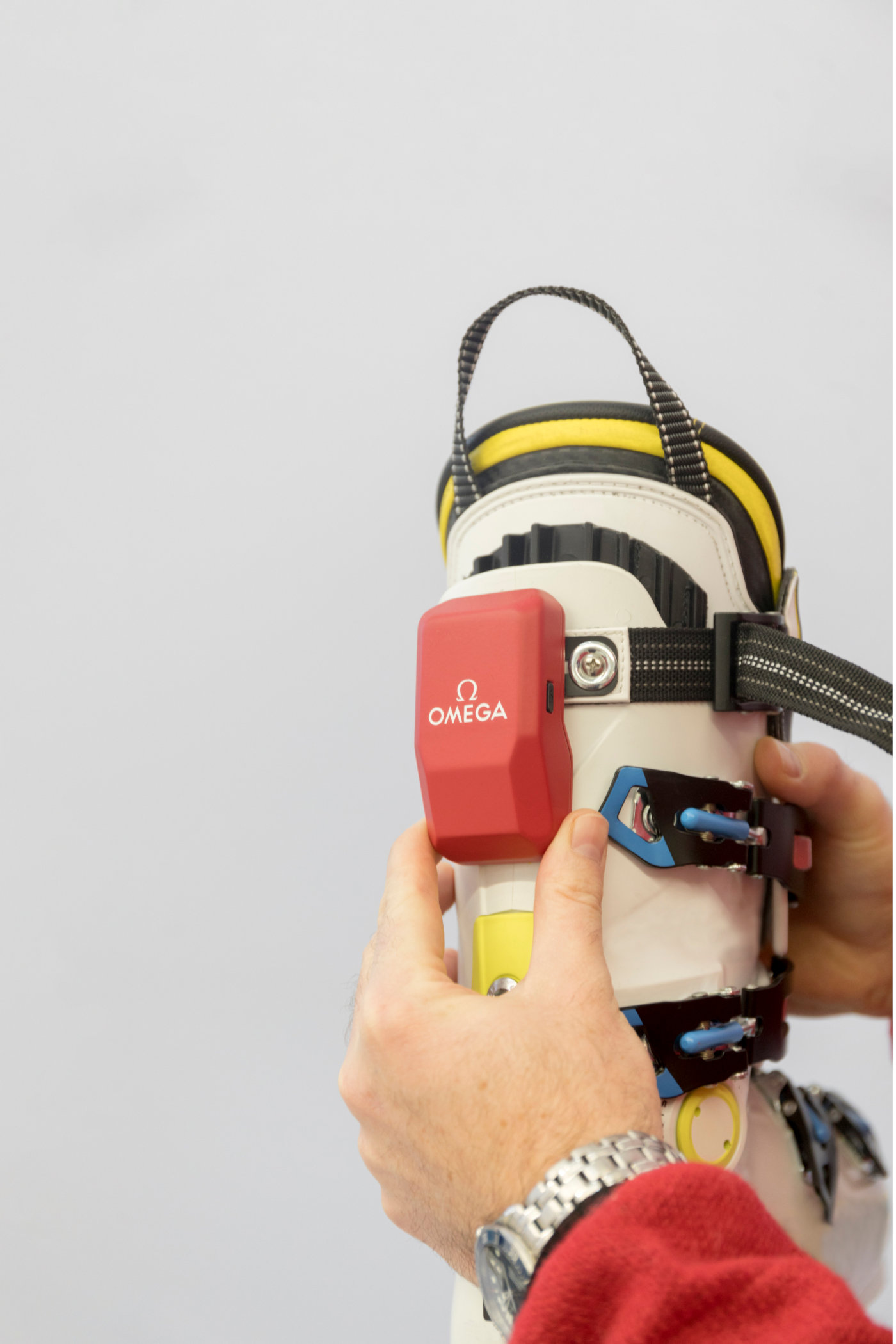



1 response
Thank you!
A most interesting article! I really appreciate all the time & research that you must have spent on this.